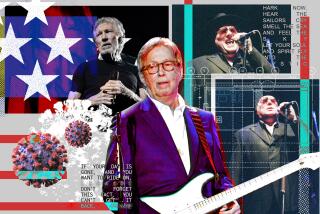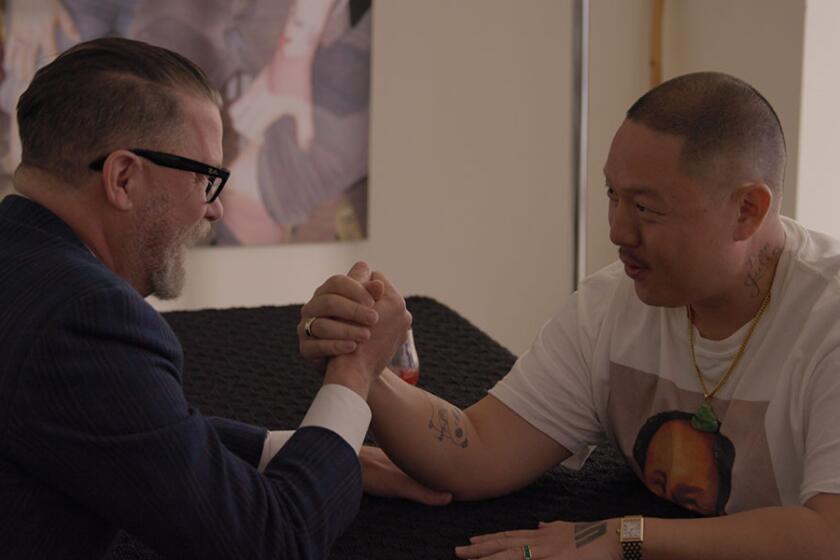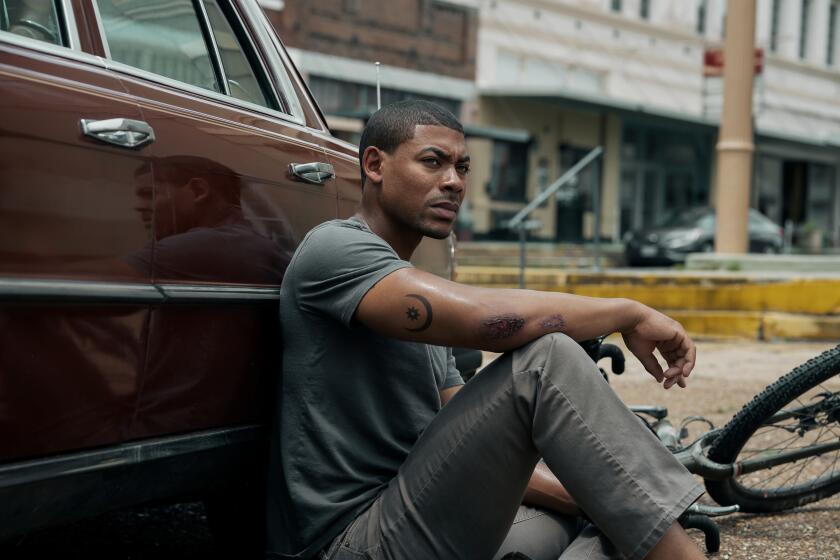‘Plimpton!’ documentary looks at George Plimpton’s lives
George Plimpton’s greatest story was his own life.
There was very little the renowned journalist, writer and longtime editor of the literary journal the Paris Review didn’t try. During a career that spanned the second half of the 20th century, Plimpton was a quarterback for the Detroit Lions, pitched at Yankee Stadium, sparred with Archie Moore, played the triangle with the New York Philharmonic, performed stand-up comedy, flipped on a trapeze and much, much more.
He was an early practitioner of what was then called “participatory journalism,” throwing himself into unfamiliar situations in the service of writing about them. His goal was to give his readers a glimpse of what it was like to be on the inside of any number of challenging and coveted vocations — in a witty and entertaining fashion. In sports he always wore the number 0 as a sign of his amateur status. Over time, his name made headlines and his career augured the rise of reality television and blogging, an era in which the personal becomes public and the scribe, the star.
PHOTOS: Hollywood backlot moments
A new documentary about his life called “Plimpton!,” which will be released Friday, is a fond look backward at his remarkable life. Directed by Tom Bean and Luke Poling, the film taps into never-before-seen footage from Plimpton’s archives to draw a picture of a man who, despite his insider status, felt like an outsider.
Plimpton lived multiple lives within one life, many of them contradictory, as evidenced by his proudest accomplishment: his role as the editor of the Paris Review. For 50 years he quietly kept the seminal literary magazine afloat, often with money earned through his publicized exploits, in order to promote and launch the careers of some of the most vaunted American writers of the 20th century, including William Styron, Terry Southern, Jack Kerouac and Philip Roth.
“George’s life was recorded mostly for the stunts and derring-do that he had. What people don’t realize is that was a very small part of his life — he was a working writer and editor. He worked seven days a week at it,” says his widow, Sarah Dudley Plimpton.
She gave the filmmakers access to old film reels, video and audio cassettes, and notebooks and journals that were sitting in the basement of her apartment on East 72nd Street on the Upper East Side of New York. The apartment also doubled as the offices for the Paris Review.
Plimpton wrote thousands of articles and more than a dozen books, including the famed “Paper Lion,” about his experience with the 1963 Detroit Lions. Yet some of his contemporaries in the film, including novelist James Salter, speculate that Plimpton would have preferred to have been in “deeper water” as a writer. Some of his friends and family, including Dudley Plimpton and his first wife, Freddy Espy Plimpton, brush that notion off as nonsense.
“The closest thing we found to a smoking gun as far as what he really wanted to do with his life was the photo in his high school yearbook,” says Poling, who with Bean spent more than two years combing through Plimpton’s effects, and another two years assembling them for the film. “Underneath it says, ‘Dream job or career,’ and George put ‘journalist,’ not ‘novelist’ or ‘writer.’”
In this pre-Internet era, famous writers were rock stars, with authors such as Ernest Hemingway and Norman Mailer as well known as movie stars. At the time, writing the “great American novel” was considered the Holy Grail, the quest of the true literary man.
“George’s peers were the generation who survived World War II and matured during the Cold War; that was a pretty serious crowd,” says Dudley Plimpton. “I think they just didn’t get him.... George was a lampoon man; he had a great sense of humor. He wanted to be out in the world having fun with life, not sitting at a typewriter all day.”
For Plimpton, however, fun was also serious business. For decades his apartment was the site of some of New York City’s most legendary parties. Among the black-and-white footage from the 1960s that Bean and Poling were “bug-eyed” to discover was a reel of film panning through a crowd at one of Plimpton’s soirees that included Truman Capote, Norman Mailer, Allen Ginsberg, Peter Matthiesen, Ralph Ellison and more.
“I think half of New York tromped through our apartment,” says Dudley Plimpton, adding that Plimpton was known as the “Iron Man,” and that the night before 9/11 Bill Murray attended one of his parties and Paul McCartney sang to her. “Our whole generation drank — writers drink — and the clouds of smoke in the apartment … I don’t think it was a healthy lifestyle. That was how it was in New York in those days, George just dragged it out a bit longer.”
Dudley Plimpton suspects the excess contributed to Plimpton’s death in his sleep in 2003, at the age of 76.
PHOTOS: Celebrities by The Times
“He went out the last night of his life, he was at Elaine’s [restaurant and bar],” says his son Taylor Plimpton, who recalls that his father was a tireless extrovert and had a hard time staying in at night. “He somehow managed to drink a couple of glasses of water before he went to bed and then get up and have toast.”
Plimpton was friends with another legendary party host: Hugh Hefner, who is shown in the film as a young man playing three-dimensional tic-tac-toe with Plimpton. Hefner founded Playboy in 1953, the same year that Plimpton put out the first issue of the Paris Review, and recalls that whenever Plimpton was in Chicago he would stay at the mansion.
“He was a very classy guy, and he had a Kennedy-like manner and speech,” says Hefner. “He was also very attractive; certainly the ladies were very attracted to him.”
Plimpton was tall and debonair, with a delicate, inquisitive face. Sharp suits fit him well and his posture was impeccable. He was from a patrician East Coast family and, as Hefner points out, spoke with the cadence of a Kennedy. It’s an accent, now all but lost, that rings of pipe smoke, bow ties and the Ivy League.
But Plimpton was not an elitist.
“George was, above all, not a snob,” says Philip Gourevitch, who took over as the editor of the Paris Review after Plimpton died. “He had an almost Whitmanesque appetite for human variety as long as it was energetic and alive and singular. And he liked to bring all those people together.”
“The doors were always open at his parties. He spoke to me, someone with one published short story to my credit, in exactly the same way he spoke to Philip Roth or Norman Mailer or Terry Southern, all of whom I met in his apartment,” says screenwriter and director Stephen Gaghan, who won an Oscar for his screenplay for “Traffic,” and was an intern at the Paris Review. “High, low and everything in between, George was curious about us all.”
He didn’t talk much about himself, though, says Hefner. He was the consummate observer.
“The key to George was his ability to mix his identity in with those of others — to have many different personalities,” he says. “He had to be able to do that in order to take on the numerous personas that he wrote about.”
Or as his son, Taylor says, “The truth is that he lived so many lives that that there is no way you could squeeze them into an hour-and-a-half movie. You could do a 10-part CNN series.”
PHOTOS AND MORE
VIDEO: Upcoming summer films
ENVELOPE: The latest awards buzz
PHOTOS: Greatest box office flops
More to Read
Only good movies
Get the Indie Focus newsletter, Mark Olsen's weekly guide to the world of cinema.
You may occasionally receive promotional content from the Los Angeles Times.











